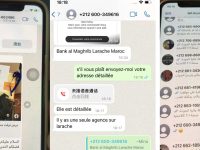Inside the Parallel Worlds of Niche Brand Sellers: Instagram Chat Model vs. Independent Site Model
In the niche designer-inspired product industry, there are two major business models. One is the Instagram chat-based model, widely adopted by merchants from Guangzhou, China, and the other is the independent site-based model, typically operated by sellers from Putian, Fujian, China. In this article, we will refer to them as the “Guangzhou Faction” and the “Putian Faction” respectively.
1. The Guangzhou Faction: Instagram-Based Selling
The Guangzhou Faction mainly focuses on fast-moving fashion-related consumer goods, especially high-end inspired products based on globally recognized designer brands like LV, Gucci, Chanel, Dior, and many more. Product categories range widely — from luxury-style watches, handbags, and boots, to scarves, sunglasses, perfumes, and clothing.

If you search brand-related keywords for watches or bags on Instagram, you’ll likely find countless accounts showcasing premium-style goods — many of them operated by Guangzhou-based sellers.
Instagram + WhatsApp as Transaction Pipeline
The primary channel for these transactions runs through Instagram DMs and WhatsApp. The flow typically includes:

Style confirmation
Price negotiation
Payment method confirmation
Order fulfillment
A WhatsApp link like api.whatsapp.com/send?phone=number can be placed in the Instagram profile, enabling instant chat initiation with potential customers.

In the style confirmation stage, sellers often scramble to gather product images, hoping to meet the buyer’s expectations. Experienced sellers may provide organized photo album links to allow clients to browse multiple options at once.
The Payment Bottleneck
One of the biggest challenges with this model is payment processing. Due to the nature of the product categories, many PayPal accounts face bans or frozen funds. As a result, sellers often turn to Western Union, MoneyGram, or WISE, which offer limited buyer protection — further reducing the likelihood of a successful transaction.
2. Key Challenges of the Chat-Based Sales Model
①. Low Conversion Rate:
Due to buyer hesitation and lack of secure payment gateways, the average conversion rate is only about 1 in 20, compared to the independent site model.
②. Low Operational Efficiency:
Each order requires repeated back-and-forth between seller and buyer, significantly reducing sales throughput.
③. High Labor Intensity:
Because of time zone differences, many sellers stay up into the early morning hours chasing inquiries and preparing quotes.
④. High Risk of Account Suspension:
Once an Instagram account gains traction, it risks being flagged or banned. Merchants must constantly rotate and grow new accounts to maintain operations.
3. Why Some Still Win at the Instagram Game
Despite these drawbacks, some Guangzhou-based sellers manage to generate over $1 million per month. Their strategies can be broken down into three pillars:
①. Multi-Account Matrix:
Using simulators and virtual environments, these sellers manage dozens or hundreds of accounts, carefully simulating organic growth behavior.
②. Human-Mass Tactics:
Large teams with clear task separation help compensate for the low efficiency of the chat model.
③. Automation Scripts:
Using smart scripts to simulate human actions like likes, comments, DMs, and follows, they can drive traffic through hashtags and interactions, albeit with the risk of platform bans if done improperly.
4. The Putian Faction: Independent Website Model
If the chat-based approach is like a bicycle, then the independent website model is more like an airplane.
The Putian Faction, especially sellers from Fujian, are veterans in direct-to-consumer websites for premium-style athletic footwear, including top-selling silhouettes inspired by Nike, Adidas, and others.
Traffic Acquisition Methods:
①. Advertising Traffic:
Leveraging Facebook ads, often using cloaking techniques to bypass platform restrictions while funneling buyers to high-conversion landing pages.
②. Community-Based Traffic:
Creating affiliate-style groups or pinned channels that incentivize agents and customers to resell via commission systems.
③. Viral Traffic:
Driving attention through short videos, livestreaming, and influencer marketing — especially effective when paired with timely drops and trendy SKUs.
5. Conclusion: From Labor-Intensive to Scalable
Operating through chat is often compared to “trading time for money“, with every deal requiring high manual involvement. For those with the right team and system, it can be profitable — but it’s hard to scale.
By contrast, independent DTC websites, with proper marketing, infrastructure, and automation, offer a more scalable and sustainable model — especially in the world of designer-inspired product sales.





